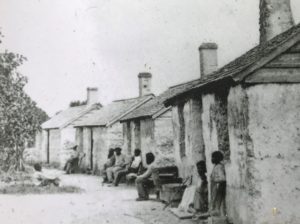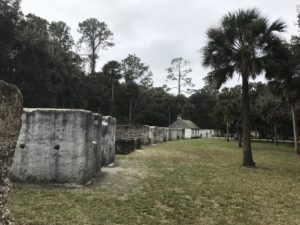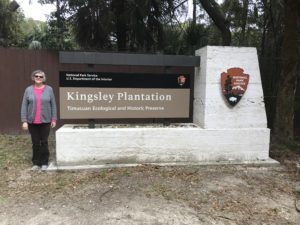 Last week Tom and I headed to Kingsley Plantation at Timucuan Ecological and Historic Preserve near Jacksonville, Florida. Although we visited Timucuan in 2017 (read the post here), we had not been to the Kingsley Plantation area. One of their rangers visited us a couple of weeks ago and told us about their living history program. We thought it might be a place for us to volunteer in the future.
Last week Tom and I headed to Kingsley Plantation at Timucuan Ecological and Historic Preserve near Jacksonville, Florida. Although we visited Timucuan in 2017 (read the post here), we had not been to the Kingsley Plantation area. One of their rangers visited us a couple of weeks ago and told us about their living history program. We thought it might be a place for us to volunteer in the future.
The Kingsley Plantation has the oldest original plantation house in Florida. The plantation house needs a visit by the Historic Restoration Team because it was damaged by Hurricane Dorian. Several ceilings fell down due to water leaks from the roof. The front porch steps were also damaged. The plantation house is open for limited tours on weekends. There is a separate kitchen building behind the house. You can also walk around the barn and the historic garden.
The slave quarters are very interesting. There are remains of 23 slave cabins made of tabby. The cabins are arranged in a semi-circle reminiscent of the layout of African villages. One cabin has been restored. Most of the cabins are two rooms with sleeping platforms instead of beds.
The Kingsley family is the most interesting part of the plantation. Zephaniah Kingsley was British, but moved to South Carolina with his family while still a boy. His father owned a rice plantation in South Carolina. When Zephaniah grew up he became a slave trader and plantation owner in Spanish Florida. Because the United States outlawed importing slaves in 1807, Zephaniah brought them to Florida and then smuggled them to Georgia and South Carolina.
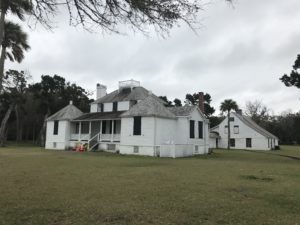
Zephaniah fell in love with one of the slaves he brought from Africa, Anna Madgigine Jai. He freed her and married her in Cuba when she was just 13 and they had several children together. In 1814 Zephaniah bought the Kingsley Plantation and lived there with Anna and their children. Spanish Florida recognized mixed-race marriages and gave full legal protection to the children of those marriages. Anna owned land and slaves in her own name and managed several plantations and over 200 slaves.
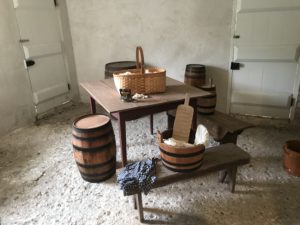
When Florida became part of the United States in 1821, the laws regarding mixed marriages changed. Children of mixed race were not allowed to inherit their father’s property. Zephaniah moved his family to Haiti and left their plantations in the care of managers. When Zephaniah died in 1843, he left all his property to Anna and his children. His nephew, Kingsley Gibbs, contested the will under the new Florida laws. Anna fought in the courts and eventually the will was upheld. At that point Anna owned more than 32,000 acres of land and 200 slaves, making her a rich woman.
The Kingsley Plantation is interesting to visit because of the people who lived there. Anna and Zephaniah were a remarkable couple for their time.

